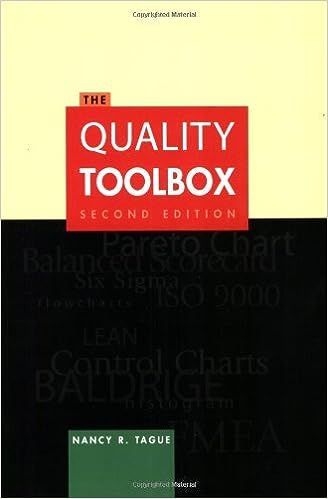2 Standards, definitions and books
2.1 Standards
Standards on projects, french references, verbs used

The main standards related to project management: .jpg)
- ISO 21500 (2021) Project, program and portfolio management - Context and concepts
- ISO 21502 (2020): Project, program and portfolio management – Guidance on project management
- ISO 21503 (2022): Project, program and portfolio management – Guidance on program management
- ISO 21504 (2022): Project, program and portfolio management – Guidance on portfolio management
- ISO 21505 (2017): Project, program and portfolio management – Guidance on governance
- ISO/TR 21506 (2018): Project, program and portfolio management - Vocabulary
- ISO 21508 (2018): Earned value management in project and program management
- ISO 21511 (2018): Work breakdown structures for project and program management
- ISO 55000 (2014): Asset management - Overview, principles and terminology
- ISO 55001 (2014): Asset management - Management systems - Requirements
- IEC 62198 (2013): Managing risk in projects – Application guidelines
- PRINCE2 (2017): Managing Successful Projects with PRINCE2
- ISO 10006 (2017): Quality management - Guidelines for quality management in projects
- PMBOK (2017): A Guide to the project management body of knowledge
- ISO 10005 (2018): Quality management - Guidelines for quality plans
- ISO 31000 (2018): Risk management – Guidelines
- Practice Standard for Work Breakdown Structures (2019)
Some French references:
- X50-105 (1991): Project management – Concepts
- FD X50-116 (2003): Project management: Management by projects - Presentation and implementation recommendations
- FD X50-117 (2003): Project management - Risk management - Project risk management
- FD X50-137 (2006): Project management - Cost management
- FD X50-138 (2006): Project management - Deadline management. Organization, planning, coordination
- NF X50-115 (2017): Project and program management - General presentation
And also:
- ISO 9000 (2015): Quality management systems – Fundamentals and vocabulary
- ISO 9001 (2015): Quality management systems - Requirements
Project Management Body of Knowledge: set of standard terminology and guidelines (a body of knowledge) for project management
For simplicity, this module is based on ISO 21502. This standard does not contain requirementsexplicit or implicit need or expectation (see also ISO 9000, 3.1.2) (there is no verb “shall”). They are recommendations on project management. Verbs are, for example:
- should
- could
- can
- it suits
- it is important
- it is recommended
- it is possible
- it is necessary
- it is essential
- it is accepted
- there occurs
The correspondences between the ISO 21502, ISO 21500, ISO 10006 and PMBOK standards are shown in annex 04. To go further, you can use the “Project Management Body of Knowledge” guide. If your interest is mainly focused on the quality of a project, you should use ISO 10006. 
None of these standards are obligatory but as Deming said:
There is no need to change. Survival is not obligatory
.jpg) Minute of relaxation. Cf. game: Standards
Minute of relaxation. Cf. game: Standards
2.2 Definitions
Definitions, terms, acronyms

The beginning of wisdom is the definition of terms. Socrates
There are multiple definitions of the word "project". Some examples:
- image of a situation, of a state that we think we will achieve (Robert Dictionary)
- a problem whose solution is planned (Joseph Juran)
- temporary business initiated with the aim of providing a unique product, service or result (PMBOK)
- unique process, consisting of a set of coordinated and controlled activities with start and finish dates, undertaken to achieve an objective conforming to specific requirements, including the constraints of time, cost and resources ( ISO 9000)
- temporary organization that is created for the purpose of delivering one or more commercial products in accordance with an agreed business case (PRINCE2)
- unique process undertaken to achieve an objective (ISO 10006)
Our preference:
Project: temporary effort initiated with the goal of solving a problem
Some definitions and acronyms:
Activity (step, phase): set of tasks to obtain a deliverable
Benchmarking: comparative analysis method in connection with one or more competitors
Brainstorming: method allowing the development of ideas from the participants in order to find solutions
Business case: document supporting decision-making relating to a project
Cf.: confer (from Latin), compare, see
Constraint: factor that limits the completion of a project
Control: see inspection
Critical activity: any activity that impacts a project as a whole
Deliverable: result of a project
Duration: work period necessary to finalize an activity
Effort: cost necessary to finalize an activity in people/days
Enterprise risk management: global approach to controlling uncertainties and their interactions in business
FIFO: First in, first out
FMEA: Failure Modes and Effects Analysis. Technical risk prevention approach
Hazard: situation that could lead to an incident
Identify the hazard: ask yourself what could go wrong
Impact: consequence of an event affecting the objectives
Inspection: actions of measuring, testing and examining a product, service, process or material to determine conformity with requirements
Likelihood: possibility that something happens
Management system: set of processes allowing objectives to be achieved
Milestone: significant point or event
MS: management system
Non-quality: gap between expected quality and perceived quality
NVA: Non-Value Added. What the customer is not ready to pay
Opportunity: uncertain event that may have a favorable impact
Project life cycle: all phases from start to finish of a project
Project management: the use of specific knowledge, skills, tools and techniques to deliver something of value to people (PMI)
Quality: ability to meet requirements
Requirement: implicit or explicit need or expectation
Responsibility: ability to make a decision on your own
Risk analysis: risk assessment activity to understand the nature of a risk and determine its impact
Risk assessment: risk identification, analysis and evaluation process
Risk factor (peril, danger): element likely to cause a risk
Risk identification: assessment activity to find and describe risks
Risk level: criticality of the risk according to the impact and likelihood
Risk management plan: risk management planning including approach, steps, methods, resources
Risk management system: set of processes enabling the risk objectives to be achieved
Risk management: activities to restrict the possibility that something goes wrong
Risk measurement: set of possibilities with quantified probabilities and losses
Risk owner: person with responsibility and authority to manage risk
Risk prevention: activities based on decreasing risk likelihood of occurrence
Risk protection: activities based on reducing risk impacts
Risk severity: measurement of risk impact
Risk threshold: acceptance limit (below) or non-tolerance limit (above)
Risk treatment: risk modification activities
Risk: likelihood of occurrence of a threat or opportunity
Safety: absence of unacceptable risk
Schedule (of the project): activities with planned dates, durations, milestones and resources
Sponsor (of the project): person or group ordering and recipient of the project
Stakeholder: person, group or organization that can affect or be affected by a company
Strategy: total approach to achieve objectives
Surveillance: set of planned actions to ensure the effectiveness of control measures
SWOT: Strengths, Weaknesses, Opportunities, Threats. Tool for structuring a risk analysis
System: set of interactive processes
Task (action, operation): any work during a period leading to a result
Threat: uncertain event that could have a negative impact on objectives
Uncertainty: existence of more than one possibility
Work breakdown structure: breaking down a project into work elements
In the terminology of management systems, do not confuse:
- accident and incident:
- an accident is an unexpected serious event
- an incident is an event that can lead to an accident
- activity, deliverable and task:
- an activity is a set of tasks
- a deliverable is the result of an activity
- a task is a series of simple operations
- anomaly, defect, dysfunction, failure, nonconformity, reject and waste:
- an anomaly is a deviation from what is expected
- a defect is the non-fulfillment of a requirement related to an intended use
- a dysfunction is a degraded function that can lead to a failure
- a failure is when a function has become unfit
- a nonconformity is the non-fulfillment of a requirement in production
- a reject is a nonconforming product that will be destroyed
- a waste is when there are added costs but no value
- audit program and plan
- an audit program is the annual planning of the audits
- an audit plan is the description of the audit activities
- audit, inspection, auditee and auditor
- an audit is the process of obtaining audit evidence
- an inspection is the conformity verification of a process or product
- an auditee is the one who is audited
- an auditor is the one who conducts the audit
- cause and symptom
- the cause is the circumstance leading to a failure
- the symptom is the character linked to a state
- complex and complicated project
- a project is complex when information is unknown to us (reproducing an air flow)
- a project is complicated when the difficulty is technical (building a rocket)
- control and optimize
- to control is to meet the objectives
- to optimize is to search for the best possible results
- customer, external provider and subcontractor
- a customer receives a product
- an external provider provides a product on which specific work is done
- a subcontractor provides a service or product on which specific work is done
- duration and effort
- duration is the period during which the activity is carried out
- effort is the time spent by a person to complete an activity
- effectiveness and efficiency
- effectiveness is the level of achievement of planned results
- efficiency is the ratio between results and resources
- follow-up and review
- follow-up is the verification of the obtained results of an action
- review is the analysis of the effectiveness in achieving objectives
- hazard, problem and risk
- a hazard is the state, the situation, the source which can lead to an accident
- a problem is the gap between the actual situation and the desired situation
- a risk is the measure, the consequence of a hazard and it is always a potential problem
- inform and communicate
- to inform is to give someone meaningful data
- to communicate is to pass on a message, to listen to the reaction and discuss
- mapping and organization chart
- mapping is the graphic presentation of processes and their interactions in a company
- the organization chart is the graphic presentation of the departments and their links in a company
- objective and indicator
- an objective is a sought-after commitment
- an indicator is the information on the difference between the pre-set objective and the achieved result
- operation and project
- an operation is carried out by a stable team using repetitive processes
- a project is carried out by a temporary team using a unique process
- organization and enterprise, society, company
- organization is the term used by ISO standards as the entity between the supplier and the customer
- an enterprise, society and company are examples of organizations
- prevention and protection, cf. figure 2-1
- prevention is the means to reduce the likelihood and frequency of occurrence of a risk (checking tire pressure)
- protection is the means to limit the impact of a risk (fastening your seat belt)
- probability, uncertainty and likelihood
- probability expresses the quantitative analysis of uncertainty
- uncertainty is the imprecision of predicting
- likelihood expresses the qualitative analysis of uncertainty
- process, procedure, product, activity and task
- a process is how we satisfy the customer using people to achieve the objectives
- a procedure is the description of how we should conform to the rules
- a product is the result of a process
- an activity is a set of tasks
- a task is a sequence of simple operations
- program and portfolio
- a program brings together projects and other activities
- a portfolio is a set of project programs and other activities
- project client and sponsor
- the project client is the customer of the project
- the sponsor is the boss of the project
- schedule and plan
- a schedule is a plan and resources
- a plan is the set of activities and durations

Figure 2-1. Prevention and protection
Remark 1: between project manager and project leader, our preference is for project manager
Remark 2: between risk owner and risk driver our preference is for risk owner
Remark 3: between scope, content and perimeter our preference is for scope
Remark 4: between likelihood and probability, our preference is for likelihood (of appearance)
Remark 5: a risk can have negative impacts (we speak of threats) or positive impacts (we speak of opportunities). Seizing an opportunity is taking risks, but not seizing an opportunity can expose us to risk. Risk is often assimilated with hazard and commonly used instead of threat.
Remark 6: each time you use the expression “opportunity for improvement” instead of non-conformity, dysfunction or failure you will gain a little more trust from your interlocutor (external or internal customer)
Remark 7: the use of ISO 9000, ISO 19011 and ISO/TR 21506 definitions is recommended. The most important thing is to determine a common and unequivocal language for everyone in the company.
For other definitions, comments, explanations and interpretations that you don’t find in this module and in annex 06, you can consult: 
- ISO Online Browsing Platform (OBP)
- IEC Electropedia
The icons used in the module:
.jpg) explanation, example, detail, rule
explanation, example, detail, rule purpose (goal)
purpose (goal) other
other input
input practice (activity)
practice (activity) output
output process
process record
record procedure (documented)
procedure (documented) question (to ask or ask yourself)
question (to ask or ask yourself) joke
joke game
game trap to avoid
trap to avoid
.jpg) Minute of relaxation. Cf. game: Effectiveness
Minute of relaxation. Cf. game: Effectiveness
2.3 Books
Books related to quality and project management

When I think of all the books still left for me to read, I am certain of further happiness. Jules Renard
.jpg) Books for further reading on project management:
Books for further reading on project management:
 Eliyahou Goldratt, Jeff Cox, The Goal, A Process of Ongoing Improvement, North River Press, 1984
Eliyahou Goldratt, Jeff Cox, The Goal, A Process of Ongoing Improvement, North River Press, 1984 Masaaki Imai, KAIZEN, The Key to Japan’s Competitive Success, McGraw-Hill, 1986
Masaaki Imai, KAIZEN, The Key to Japan’s Competitive Success, McGraw-Hill, 1986 James H. Harrington, Poor-Quality Cost, Dekker, 1987
James H. Harrington, Poor-Quality Cost, Dekker, 1987 Taiichi Ohno, Toyota Production System: Beyond Large-Scale Production, Productivity Press, 1988
Taiichi Ohno, Toyota Production System: Beyond Large-Scale Production, Productivity Press, 1988 Sid Kemp, Project Management Demystified, McGraw-Hill, 2004
Sid Kemp, Project Management Demystified, McGraw-Hill, 2004 The Quality Toolbox, Nancy TagueASQ Quality Press, 2005
The Quality Toolbox, Nancy TagueASQ Quality Press, 2005 Larry Webber, Michael Wallace, Quality Control for Dummies, Wiley, 2007
Larry Webber, Michael Wallace, Quality Control for Dummies, Wiley, 2007 Dennis Lock, The Essentials of Project Management, Routledge, 2014
Dennis Lock, The Essentials of Project Management, Routledge, 2014 Team, Project Risk Management Guidelines: Managing Risk with ISO 31000 and IEC 62198, Wiley, 2014
Team, Project Risk Management Guidelines: Managing Risk with ISO 31000 and IEC 62198, Wiley, 2014  Kemal Atesmen, Project Management Case Studies and Lessons Learned, Routledge, 2014
Kemal Atesmen, Project Management Case Studies and Lessons Learned, Routledge, 2014 Gary Heerkens, Project management, McGraw-Hill, 2014
Gary Heerkens, Project management, McGraw-Hill, 2014 Kory Kogon et al, Project Management for the Unofficial Project Manager, BenBella Books, 2015
Kory Kogon et al, Project Management for the Unofficial Project Manager, BenBella Books, 2015 Cynthia Snyder Dionisio, A Project Manager's Book of Tools and Techniques, Wiley, 2018
Cynthia Snyder Dionisio, A Project Manager's Book of Tools and Techniques, Wiley, 2018 PMI, The Standard for Risk Management in Portfolios, Programs, and Projects, PMI, 2019
PMI, The Standard for Risk Management in Portfolios, Programs, and Projects, PMI, 2019 Ready Set Agile, Being an Effective Project Manager: Your Guide to Becoming a Project Management Rock Star: Best Practices, Methodology, and Success Principles for a Project Leader, Independently published, 2020
Ready Set Agile, Being an Effective Project Manager: Your Guide to Becoming a Project Management Rock Star: Best Practices, Methodology, and Success Principles for a Project Leader, Independently published, 2020 Erik Larson, Clifford Gray, ISE Project Management: The Managerial Process, McGraw-Hill Education, 2021
Erik Larson, Clifford Gray, ISE Project Management: The Managerial Process, McGraw-Hill Education, 2021 PMI, A Guide to the Project Management Body of Knowledge (PMBOK® Guide) – Seventh Edition, PMI, 2021
PMI, A Guide to the Project Management Body of Knowledge (PMBOK® Guide) – Seventh Edition, PMI, 2021 Antonio Nieto-Rodriguez, Harvard Business Review Project Management Handbook: How to Launch, Lead, and Sponsor Successful Projects, HBR andbooks Series, 2021
Antonio Nieto-Rodriguez, Harvard Business Review Project Management Handbook: How to Launch, Lead, and Sponsor Successful Projects, HBR andbooks Series, 2021 Stanley Portny et al, Project Management For Dummies, For Dummies, 2022
Stanley Portny et al, Project Management For Dummies, For Dummies, 2022 Harold Kerzner, Project Management: A Systems Approach to Planning, Scheduling, and Controlling, Wiley, 2022
Harold Kerzner, Project Management: A Systems Approach to Planning, Scheduling, and Controlling, Wiley, 2022 Chris Croft (Author), Project Management QuickStart Guide: The Simplified Beginner’s Guide to Precise Planning, Strategic Resource Management, and Delivering World Class Results, ClydeBank Media LLC, 2022
Chris Croft (Author), Project Management QuickStart Guide: The Simplified Beginner’s Guide to Precise Planning, Strategic Resource Management, and Delivering World Class Results, ClydeBank Media LLC, 2022 Joseph Heagney, Fundamentals of Project Management, HarperCollins Leadership, 2022
Joseph Heagney, Fundamentals of Project Management, HarperCollins Leadership, 2022 Orlando Casabonne, Effective Project Sponsorship: A Quick but Comprehensive Guide to Governing and Directing a Project: according to the international norm ISO 21502 for Project Management, Independently published, 2023
Orlando Casabonne, Effective Project Sponsorship: A Quick but Comprehensive Guide to Governing and Directing a Project: according to the international norm ISO 21502 for Project Management, Independently published, 2023 Orlando Casabonne, Project Management for Project Managers: according to the international norm ISO 21502 for Project Management (Project management according to the ... Project, Program and Portfolio Management), Independently published, 2023
Orlando Casabonne, Project Management for Project Managers: according to the international norm ISO 21502 for Project Management (Project management according to the ... Project, Program and Portfolio Management), Independently published, 2023 Jack Hayden, Project Management Mastery: A comprehensive guide to successfully implementing the core principles of project planning and scope management from concept to completion, EB Publishing House, 2023
Jack Hayden, Project Management Mastery: A comprehensive guide to successfully implementing the core principles of project planning and scope management from concept to completion, EB Publishing House, 2023
.jpg) Minute of relaxation. Paganini's violin concert performed with facial expressions.
Minute of relaxation. Paganini's violin concert performed with facial expressions.
